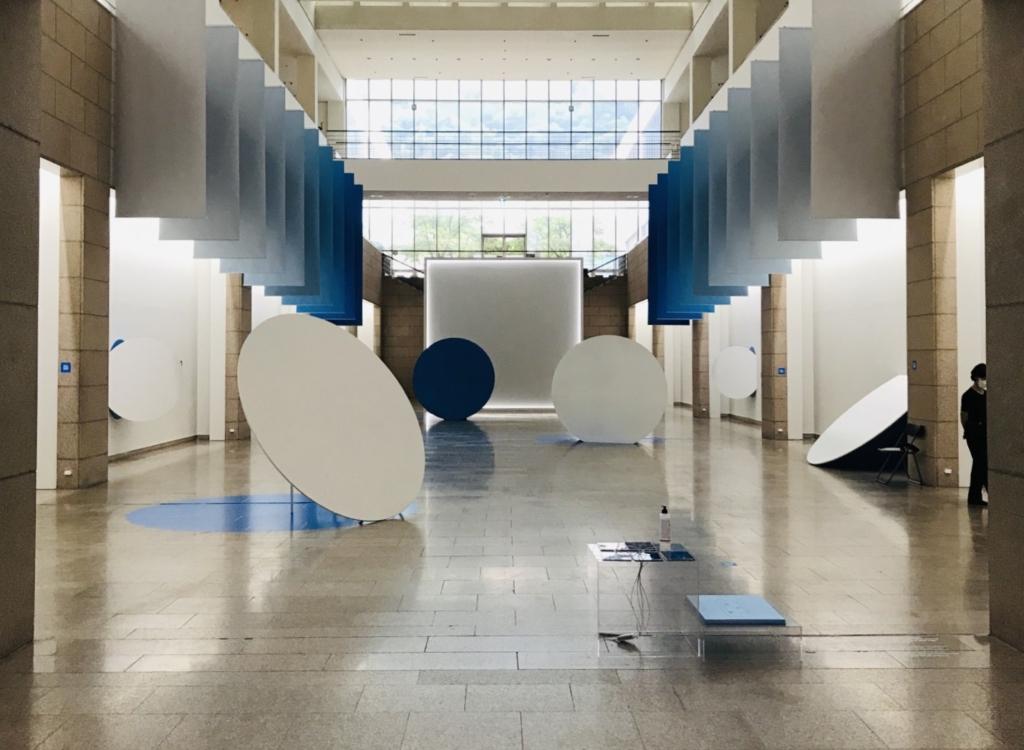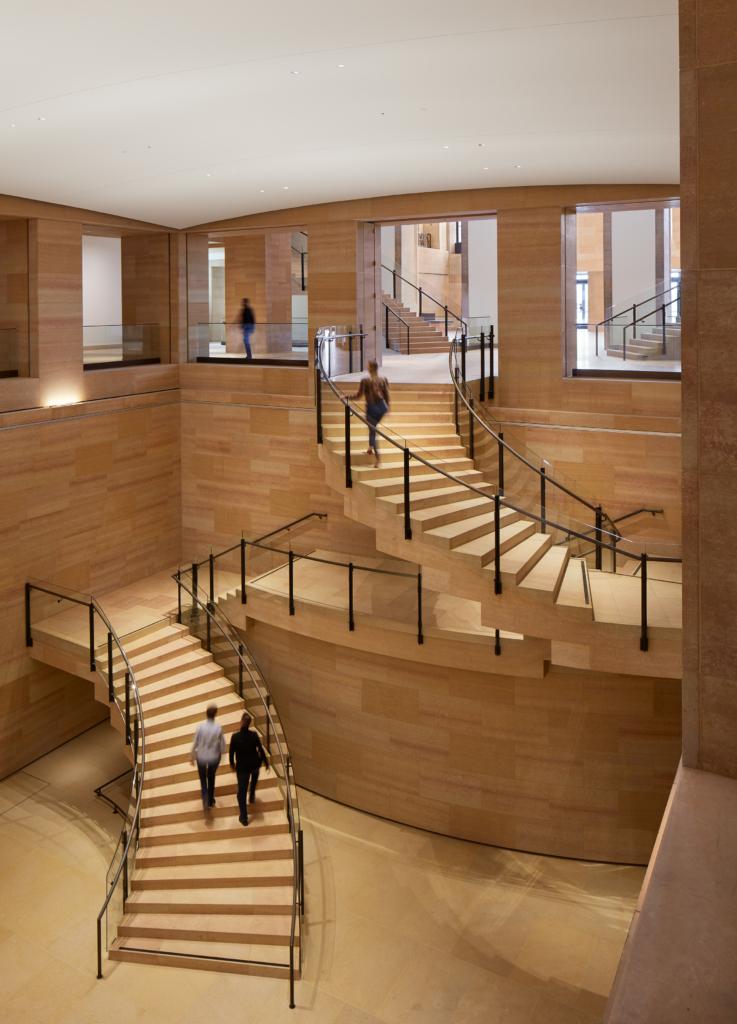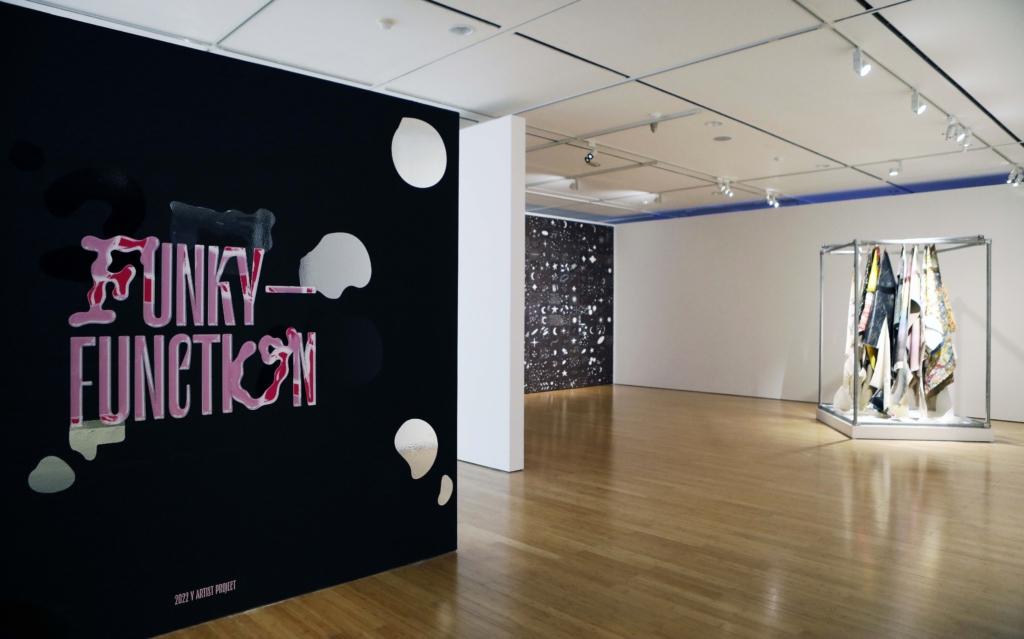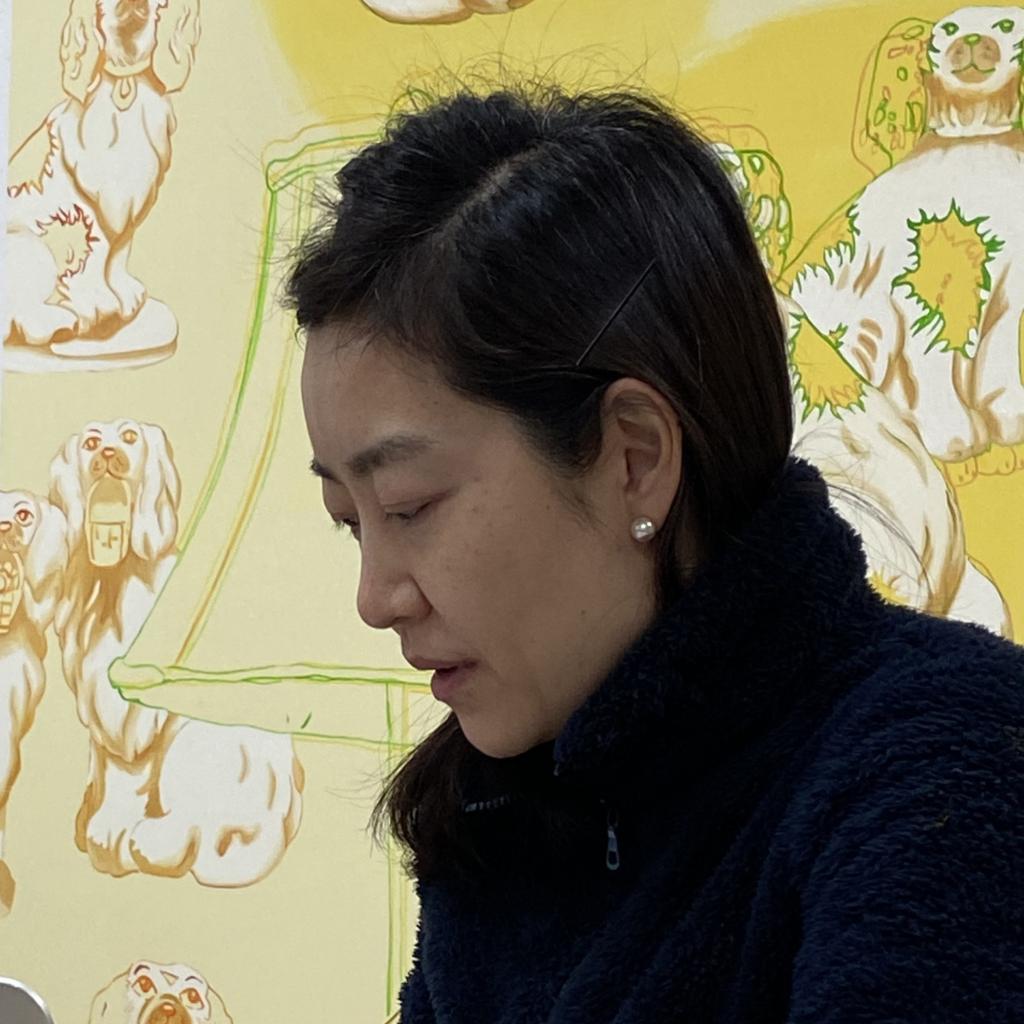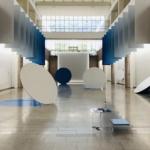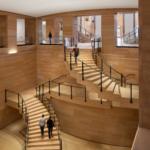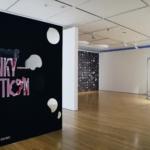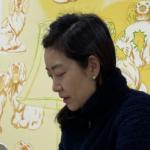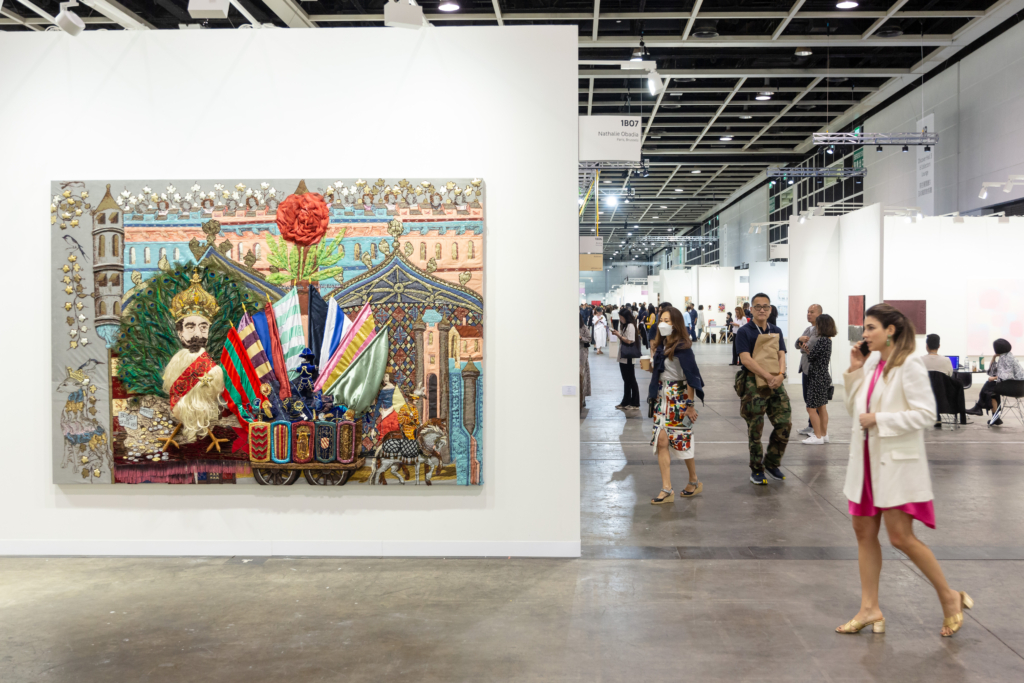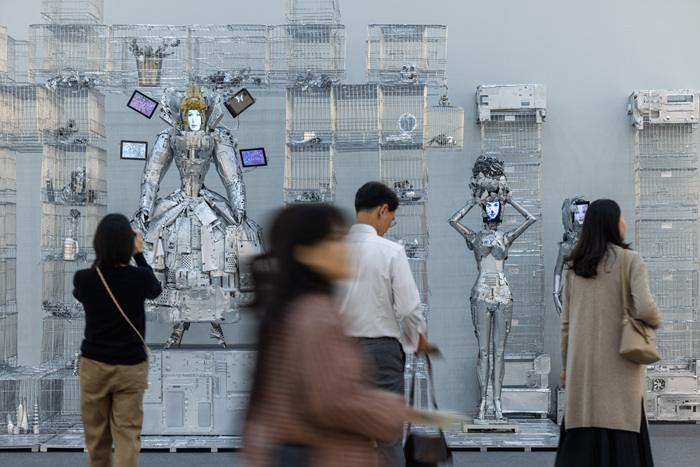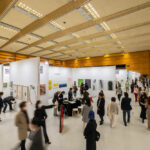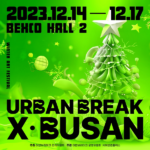The Korea Arts Management Service Released a Report on the Economic and Social Impacts of Frieze Seoul
The Korea Arts Management Service (KAMS) released a report on April 22 analyzing the economic and social impact of hosting Frieze Seoul.
In May 2021, London-based Frieze partnered with Seoul’s Kiaf (Korea International Art Fair) to co-host the annual Seoul art fair from 2022 through 2026. Launched as a contemporary art magazine, Frieze now hosts five art fairs across the world, including Frieze London and Frieze Masters, Frieze New York, Frieze LA, and Frieze Seoul.
Last year’s Frieze Seoul garnered considerable attention as Frieze’s first art fair in Asia. This year, it is scheduled to be held at COEX in Samseong-dong, the same venue as last year, from September 6 to September 9, 2023.
With one of the world’s largest art events taking place in South Korea, the Korean art market is wondering how Frieze Seoul will impact the Korean art market and what new tangible and intangible values and effects it will create.
In response to the needs of the Korean art market, the Korea Arts Management Service (KAMS) and Hyundai Research Institute released a report on April 22 analyzing the economic and social impact of hosting Frieze Seoul, held for the first time last year.
The report suggests possible ways to improve and revitalize the Korean art market while providing a foundation for support and sponsorship for the development of the Korean art market.
This article will discuss some of the points mentioned in the report, as well as the opinions of experts in the Korean art market and the shortcomings of the report. The full report can be accessed in Korean on K-ARTMARKET’s website.
According to the report, the inaugural Frieze Seoul, which was held for four days at COEX in 2022, was regarded as a successful event, attracting approximately 70,000 visitors and selling more than KRW 650 billion worth of artworks.
Art Basel, one of the world’s largest art fairs, held in Basel, Miami, and Hong Kong, opened its first Paris+ par Art Basel a month after last year’s Frieze Seoul. Compared to Paris+ par Art Basel, the number of visitors to Frieze Seoul was not far behind.
Frieze Seoul featured 110 galleries from 20 countries (including 12 domestic galleries), and Paris+ featured 156 galleries from 33 countries (including 43 domestic galleries). More galleries participated in Paris+, but the number of visitors was around 40,000.
On the other hand, Art Basel Hong Kong, Asia’s leading art fair, attracted nearly 86,000 visitors over five days this year. Although unofficial, the number of visitors to Frieze London in 2022 was estimated to be around 60,000, indicating that the number of visitors to Frieze Seoul was also high within the same Frieze Fair.
Kiaf, held in conjunction with Frieze Seoul, reported that approximately 70,000 people visited the fair over the course of five days. While it is impossible to survey every visitor, the report could have provided more valuable insights into the Korean art market by including more information about visitor diversity. Comparing and analyzing the diversity of visitors to Frieze Seoul and Kiaf with other major international art fairs would have shed light on the positions of these two fairs in the international art market and highlighted any contrasting differences between them.
According to the report, hosting Frieze in Seoul provided cost savings and convenience for Korea-based galleries and collectors. For galleries, airfare and accommodation costs for traveling to international art fairs are reduced, and the burdens associated with customs clearance and additional costs for shipping and insuring artwork are alleviated. Collectors benefit from the ability to receive their artwork immediately upon purchase and have the added convenience of paying in their native currency. They can also purchase more art as travel expenses are reduced.
In addition, hosting a global art fair allows local galleries to be more experimental. Galleries can showcase a variety of mediums, such as installations, media, and sculpture, and new artistic trends that they might not otherwise be able to exhibit at international art fairs due to cost and logistics. It can also be an opportunity to showcase the work of emerging artists who have yet to achieve marketability.
However, the inaugural Frieze Seoul fell short of the Korean art scene’s expectations, as it did not feature many innovative and experimental works. Frieze is known for showcasing bold, experimental contemporary art by emerging artists and emphasizing mid-range and affordable pieces, in contrast to Art Basel, which focuses more on high-end artworks. Many Korean art experts expected that Frieze Seoul would provide an opportunity to introduce emerging Korean artists to the international art world and international collectors.
According to the report, many of the works exhibited at Frieze Seoul 2022 were works that sold well in the Korean art market. Works by blue-chip international artists received less-than-expected reviews from market experts.
This may be a result of Frieze playing it safe in Seoul, where it is a relative newcomer to the Asian art market. Last year’s Frieze Seoul was perhaps less about experimentation and more about learning about the discernment and purchasing power of Korean collectors.
For the development of the Korean art market, the report suggests the need to diversify the art spectrum in the Korean art world. It further highlights that there are not enough Korean artists to introduce to the global art market.
Works by Korean artists exhibited at Frieze Seoul were too narrowly focused on a specific genre, making it difficult to find unique artists. Many of the works were similar in style to those of other international artists. In addition, the prices were not particularly competitive. Most of the works by blue-chip Korean artists were clustered at the high end of the market, and there was a lack of segmentation of available price points, which prevented new collectors from purchasing works by these artists.
Several media outlets have already pointed out that collectors are increasingly turning their eyes to the overseas art market, as they cannot find what they are looking for domestically.
The report suggests ways to improve this problem, including encouraging galleries to represent more artists, funding artists to participate in residencies abroad, providing funds for the creation of English-language databases, and supporting galleries and the art world to engage with the media to promote their artists. However, many other market researchers have mentioned in other media that this has to be preceded by a clear and specific art market system.
The report mentions the Korean art market’s lack of a reliable information system. In the absence of a system for overseas art professionals to research and study Korean art and artists, most rely on their connections to recommend Korean artists, resulting in biased information on the artists in Korea.
This absence of information and platforms also reflects the lack of a credible art market system. For many artists, having a platform where art professionals can find reliable information is key to breaking into the global art market.
Korean art market experts have emphasized that in order for Korean artists to be properly evaluated and compete in the global art world, it is necessary to establish objective and reliable information that can be judged by the standards accepted in the global art world.
In particular, they emphasize the need for a system that can share the history of an artwork, such as its provenance, to gain insights into its past sales and exhibition records. Artists should also have analytical information and archive that traces the evolution of their artistic practice, incorporating historical context, medium, and the intentions driving their creative endeavors.
The report also mentions the significance of art professionals. According to the report, while overseas galleries actively recruit art advisors, art consultants, and art dealers to increase sales, Korean galleries tend to rely on their own staff to handle professional tasks. Therefore, the marketing competitiveness of many Korean galleries is inevitably weak compared to international ones. The report suggests that Korean galleries should be able to benchmark the systems of international galleries to overcome this challenge.
In order for the Korean art market to be structured and function properly, it needs to be improved in multilateral ways, including building credible information systems on the artists and galleries hiring experts to function as professional organizations.
It is also important to increase social awareness of the cultural impact of contemporary art. The report estimated that if four more Frieze Seoul editions were to be held in Seoul in the future, the production-induced effects would total at least KRW 1,345.5 billion, and the value-added effects would total at least KRW 595.5 billion. However, multi-faceted improvements are needed to maximize these benefits.
The report suggests that the branding of the city, various related events, and high-end projects with higher added value should be prepared for future editions of Frieze Seoul. The fair attracts not only major art professionals worldwide but also high-end art collectors. The city should provide them with a variety of experiences that allow them to enjoy Seoul itself, not just the Frieze and Kiaf art fairs.
Developing high-end tour programs targeting these tourists will cater to their experience of Korean culture and art. However, the report mentions that existing tour programs in Seoul that only compete on price would be unable to satisfy these international visitors.
Hosting unique satellite art fairs concurrently with Frieze Seoul, organizing interesting exhibitions and programs to showcase Korean contemporary art, and inviting companies from various industries to work on marketing projects can enrich the city experience.
Art Basel Miami Beach is a great example. From large-scale exhibitions to fairs of varying sizes and themes, museums, galleries, hotels, and street art projects located near the art fair, the entire city is filled with an artistic vibe during the art fair period.
What’s particularly noteworthy about Art Basel Miami Beach is that the fair has grown into one of the most robust art hubs in the Americas, primarily due to the unwavering support of the local community and super-collectors of Latin American immigrant descent. During this time, various events other than art take place throughout the city, showcasing Miami’s unique character.
Frieze Seoul is expected to bring various economic effects along with the development of the Korean art scene if the government, companies, and even the general public can understand the impact of contemporary art events.
Related Links
Aproject Company. Co., Ltd | Founder & CEO : Jay Jongho Kim
216 Dosan-Daero, B2F, Gangnam-gu, 06047 Seoul, Korea
Business Number : 894-88-01945
Contact : aproject.company@gmail.com
Mail-order-sales registration number : 제 2021-서울강남-04243 호

























